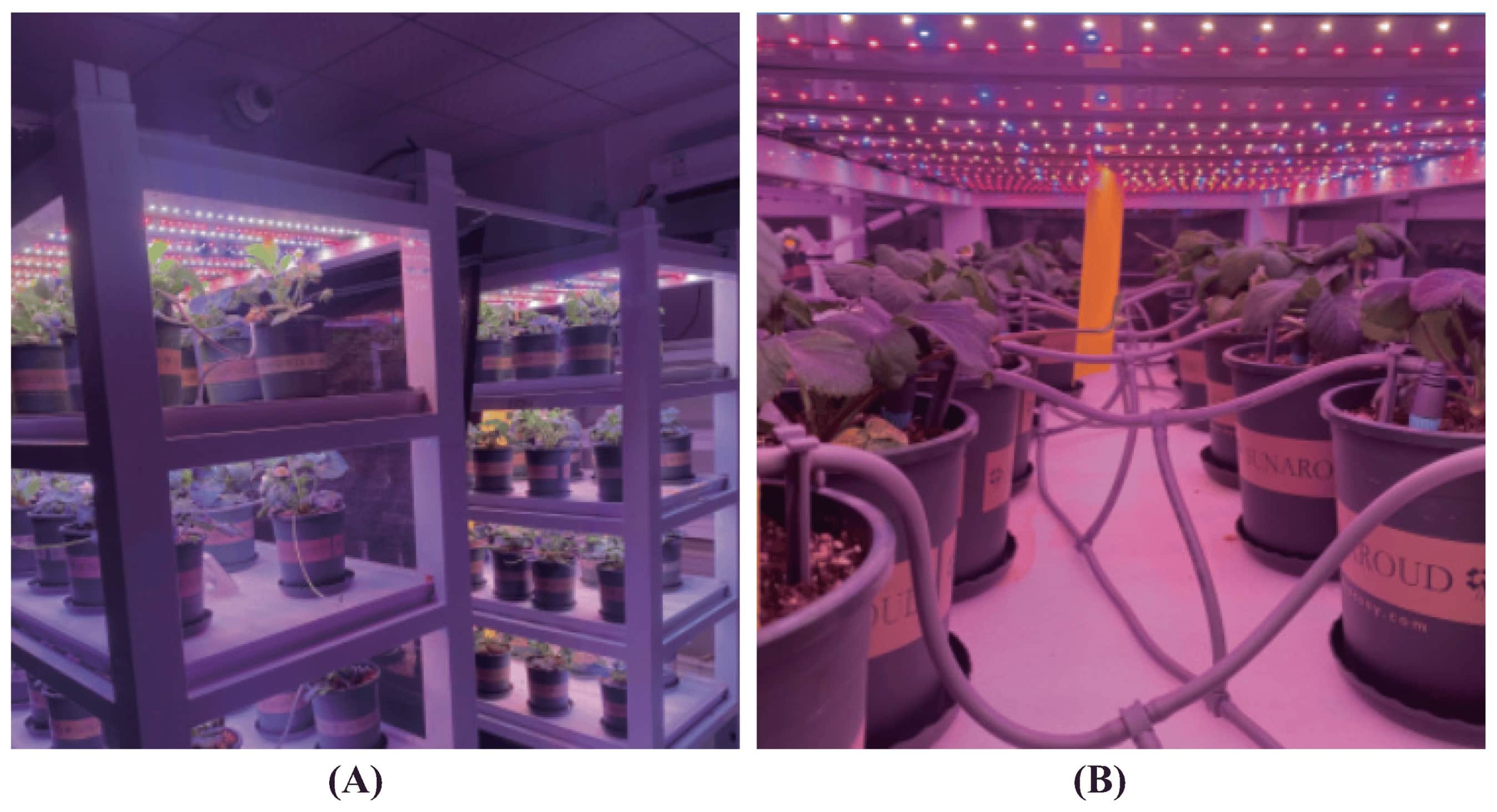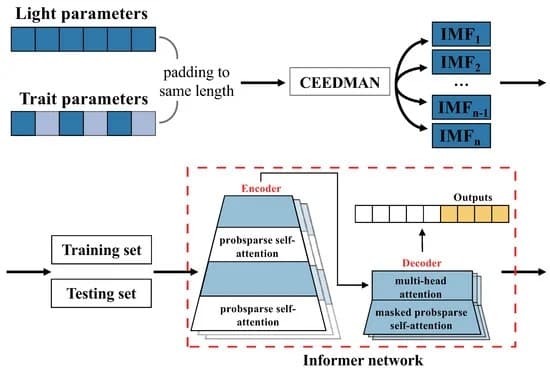Yuze Lu, Mali Gong, Jing Li, and Jianshe Ma
Published: 5 January 2024

Abstract
In crop cultivation, particularly in controlled environmental agriculture, light quality is one of the most critical factors affecting crop growth and harvest. Many scholars have studied the effects of light quality on strawberry traits, but they have used relatively simple light components and considered only a small number of light qualities and traits in each experiment, and the results were not complete or objective. In order to comprehensively investigate the effects of different light qualities from 350 nm to 1000 nm on strawberry traits to better predict the future growth trend of strawberries under different light qualities, we proposed a new approach. We introduced Spearman’s rank correlation coefficient to handle complex light quality variations and multiple traits, preprocessed the cultivation data through the CEEDMAN method, and predicted them using the Informer network. We took 500 strawberry plants as samples and cultivated them in 72 groups of dynamically changing light qualities. Then, we recorded the growth changes and formed training and testing sets. Finally, we discussed the correlation between light quality and plant trait changes in consistency with current studies, and the proposed prediction model achieved the best performance in the prediction task of nine plant traits compared with the comparison models. Thus, the validity of the proposed method and model was demonstrated.
Keywords: light quality; strawberry traits; correlation coefficient; CEEDMAN method; informer network
Figure 8. The full complete ensemble empirical mode decomposition with adaptive noise (CEEDMAN) and Informer data processing flow.
In this experiment, according to Guiamba et al. [73] and Matysiak et al. [74], we assessed 9 specific strawberry traits, including the changes of plant height, leaf count, leaf area and stolon, time of flowering, count of fruit, time of fruit ripeness, total soluble solid (TSS) content of fruit, and skin hardness of fruit.
During the initial planting stage, each strawberry seedling sample started at a similar developmental stage. Consequently, we assumed uniformity in the growth states of the samples within the same environmental conditions. Thus, it could be inferred that the growth states of strawberry samples in each subgroup were homogenous. Hence, when assessing the sample trait parameters, we employed a random selection process to choose 20 samples from each group, which comprised a total of 50 samples.
…We changed a total of 72 different combinations of light qualities and employed a portable spectrometer (StellarNet, BLK-CXR-SR, Tampa, FL, USA) to detect and record them throughout the experimentation process…






